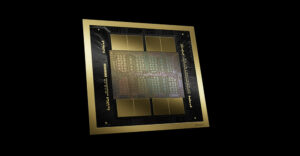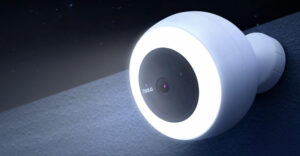
The Consumer Electronics Show (CES) held in Las Vegas every year is perhaps the most exciting show for the technology enthusiast to attend. There were several high-profile announcements made during the show — and some were only made to a select number of analysts. Perhaps the biggest public announcement was the partnership between Apple and HP, which will create an HP-branded iPod that will work not only with iTunes, but also with HP’s Media Center products based on Microsoft’s platform.
Apple has not licensed its unique DRM scheme to anyone — and most in the industry believed the company never would. However, this agreement contains all of the rights HP needs to transcode iTunes music so that it will work with the new class of Microsoft-based TVs, set-top boxes, PCs and mobile media players set to hit the market later this year. This gives HP a unique competitive advantage and starts making Apple look more and more like a cross-platform player. Currently, this agreement does not include the new mini-iPod, but I expect this oversight will be corrected by year’s end.
Hidden in this announcement was not only the depth of the technology that would be shared, but also the high-level negotiation required to make the deal happen. Top HP and Apple people were out of the loop — and Microsoft was completely blindsided.
Of course, a few days before this announcement, Apple’s mini-iPod unveiling at Macworld revealed an implicit — and dramatic — drop in price for the Hitachi Data Systems Microdrive that powers the iPod. To hit the $249 mini-iPod price point, the Hitachi drive must be selling for about $100 — a huge drop from the near-$500 price point originally set by this 4-GB product. At this new price, you can expect a lot of devices based on this technology to come out by the end of 2004.
Not to be outdone, Toshiba has announced a 15 percent smaller hard drive and has promised to match Hitachi’s price. For those who can remember how large the 10-MB Winchester hard drives were and how much they cost, this development is simply amazing.
The Coolest PC of the Show
In addition to the HP-Apple announcement, HP quietly put an Intel Extreme chip in its large 17.4″ laptop, something I’d anticipated before the show but had not yet seen. Who cares that this thing gets only 1.5 hours of battery life and weighs 10 pounds? It will smoke any other laptop out there, and if you are into performance like I am, this is exciting news.
However, if you made it over to the Transmeta booth, you saw the most amazing PC at the show — the OQO ultra personal computer. Designed by the team that built the Apple Titanium laptop, the machine is drop-dead gorgeous in a magnesium alloy case with a hidden keyboard, Bluetooth and WiFi capability, and a four-hour battery life. It runs Windows XP and fits easily in your pocket.
I still can’t understand how Steve Jobs allowed this to slip out of his shop. As a capstone product, it would have done wonders for Apple — and now likely will do the same for Microsoft and Transmeta. Hopefully, as you read this, pictures of the device will be up on OQO’s site.
Serious About CE
Microsoft also finally answered the following question: “If the PC is the center of the digital home, what does that mean? What is the digital home?” Microsoft’s answer was the most comprehensive attack on the wallet of folks like me that I have yet seen. Microsoft promises a level of consistency often hinted at by companies like Sony but never delivered.
Think of your media — music, pictures and videos — wherever you go and wherever you are. The coolest part of this equation was the Portable Media Centers, now in near-final form from Creative Labs and Samsung. Costing about $500, these portable players will let you take your movies, TV shows and music on the road — and they aren’t much larger than the iPods that took the market by storm over the holidays.
However, behind the scenes, Microsoft announced to a few of us that it would be debuting a huge win with IBM and that Microsoft’s embedded platform (on Dell and HP hardware) would be used for a nationwide Radio Shack rollout. So much for embedded Linux. As product after product was showcased running Microsoft’s embedded platform, I began to ask many of the companies that previously had indicated they were planning to use embedded Linux: “Why did you switch?”
The answer was that they didn’t really want to work on the plumbing to get their products to work with existing systems. The Microsoft brand, they said, shortened the sales cycle, and the platform dramatically sped up their time to market.
Intel in Action and Smart TVs Emerge
Say what you want, but Microsoft’s embedded team is clearly executing very well. Another company that impressed the hell out of me was Intel. Two years ago, the company was out of control, actually trying to enter the consumer-electronics market as an OEM and losing its core chip market to others as a result.
This year found the company focused on chips. From thin-client devices to portable media centers, it was Intel’s technology working behind the scenes. However, hidden in the company’s keynote was a reference to a vendor few have heard of: Omnifi.
This company is the only firm currently shipping an automotive product that synchronizes your music files via WiFi when your car is in the garage, allowing you to transfer music easily from your household collection. This reference in the speech hints at even more interesting things coming from the company. One particularly interesting announcement was its entry into the TV market with LCOS chips at a cost that should make extremely high-definition TVs available to more of us with target prices well under $2,000.
Speaking of TVs, ATI, which is typically associated with PC graphics, released a chipset that is being adapted by several TV manufacturers. Hidden in the announcement was that for $30 more, the related TV can be turned into a full Windows Media Center client. If you recall that ATI also won the Xbox business from Nvidia, you can see how Microsoft and ATI are likely to get much closer over time.
Another hidden announcement was that most of the TV and CE vendors apparently have agreed that the next TV video interface will be HDMI, a technology that appears on few devices today but is expected to be a standard by the end of the year. It is something to think about when shopping for high-end video equipment.
Automotive PCs Take Center Stage
I was fascinated by the number of companies that were bringing out automotive PCs. Largely based on VIA’s mini-ITX format and the new Nano-ITX (even smaller) platform, these products were showing up in several prototypes that could do both navigation and media management.
One company, Premier GPS, had a system that could track a school bus and broadcast video of its interior over the Internet wirelessly, enabling concerned parents and school administrators to track the bus. Evidently, there are trials of this system ongoing across North America, which probably says as much about current conditions as it does about the technology itself.
Overall, this year’s CES was an incredible show. If you ever have a chance to go, don’t pass it up. At the very least, it is one of the few places to see cars with so much sound equipment in them that they could be classified as weapons of mass destruction. When I see things like this, I have to smile because it really is a sign that things are getting better and folks are having fun again.
Rob Enderle, a TechNewsWorld columnist, is the Principal Analyst for the Enderle Group, a company founded on the concept of providing a unique perspective on personal technology products and trends.





















































